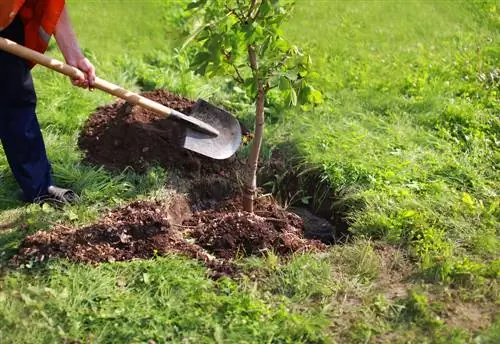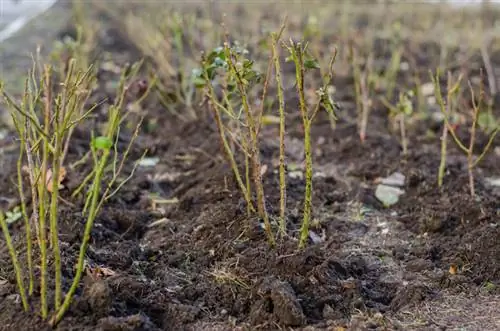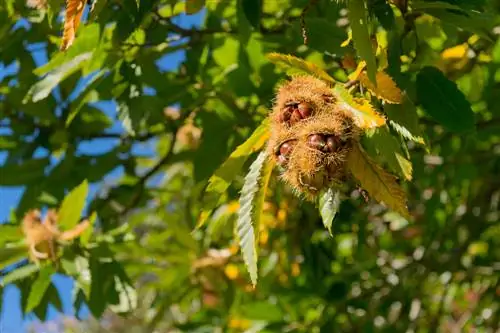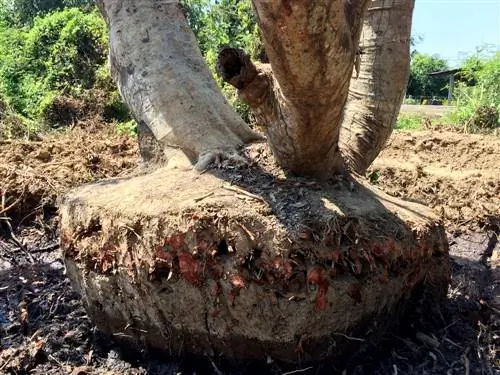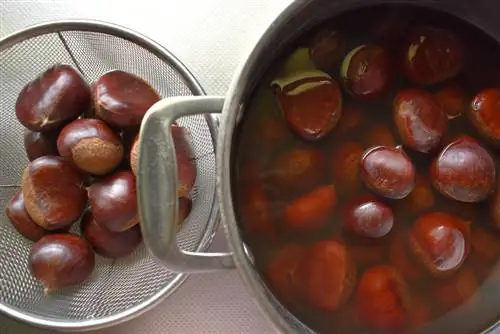- Author admin [email protected].
- Public 2023-12-16 16:46.
- Last modified 2025-01-23 11:21.
There are many reasons to think about transplanting a tree. Sometimes you can see tree nurseries planting full-grown chestnuts. However, these are specially treated, which does not apply to a “normal” chestnut in the garden.

How can I transplant a chestnut correctly?
To transplant a chestnut, choose a frost-free, leafless time, carefully dig up the root ball with the surrounding soil, plant the chestnut in a new, sufficiently large planting hole with compost and water the tree thoroughly.
When is the best time to transplant?
Two considerations are important when it comes to the right time. On the one hand, the tree should be transplanted as young as possible, because an older chestnut is reluctant to change location. So if it is foreseeable that your chestnut cannot always remain where it grew, then react as quickly as possible.
The second consideration is the time of year. It should be frost-free and the chestnut should not have any leaves. This makes your work easier and especially makes it easier for your chestnut to grow. Because without leaves, the evaporation of moisture is very low and the chestnut dries out less quickly.
What is the best way to transplant a chestnut?
If you really have to, dig up your chestnut carefully. Injury to the roots can hardly be prevented, but should be kept to a minimum. Dig a sufficiently large planting hole at the new location, add a little well-rotted compost and plant the chestnut.
Then water the tree thoroughly. It will also need a little more water than usual in the next few days. But avoid waterlogging now, otherwise you risk fungal infection of the roots. If necessary, cut back the shoots of the chestnut by about a third, this will reduce the water requirement.
Do I have to pay special attention when transplanting?
The chestnut feels most comfortable where it grew. Therefore, you should dig up the root ball as completely as possible along with the surrounding soil. On the one hand, many of the small, sensitive hair roots remain intact, and on the other hand, the chestnut takes its usual microclimate with it into the new environment. The size of the root ball roughly corresponds to the circumference of the tree crown.
The most important things in brief:
- Dig up the chestnut carefully
- Keep root injuries as low as possible
- water well after transplanting
Tip
Only replant your chestnut if it is absolutely necessary.

